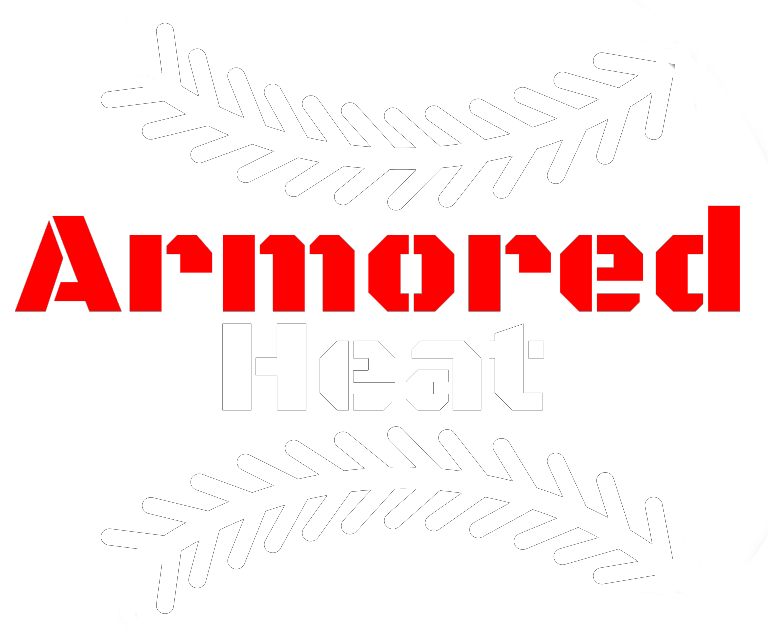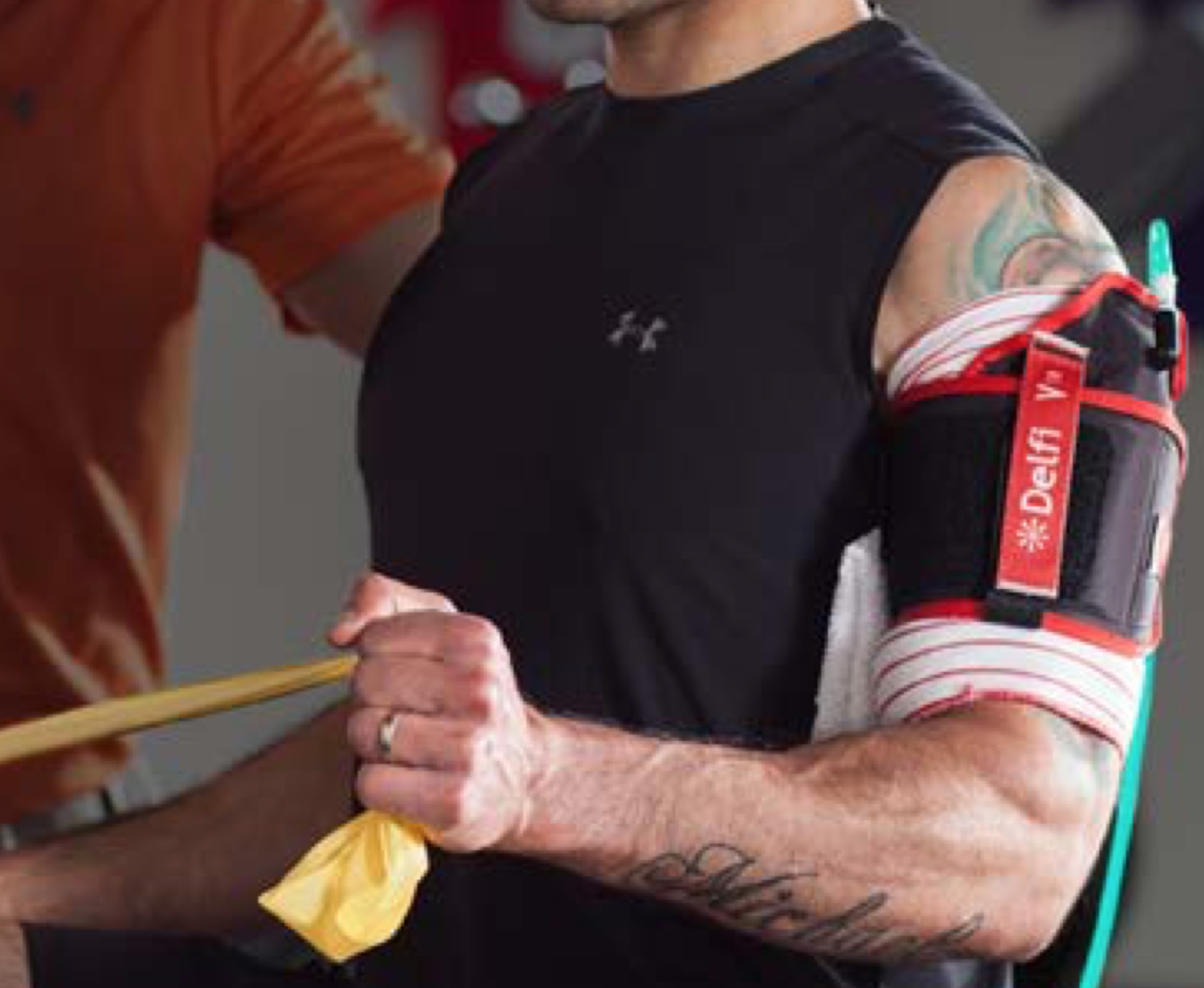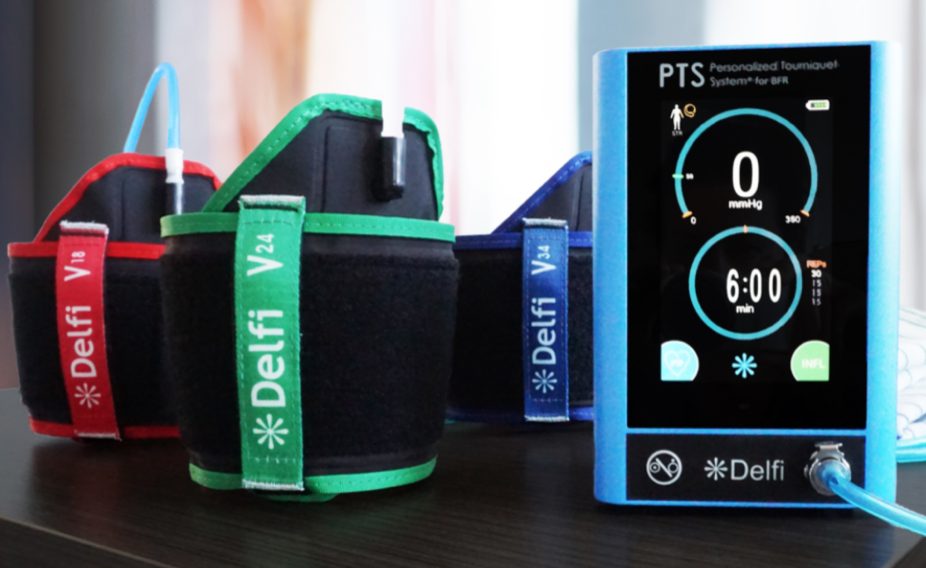Blood Flow Restriction Training: What Does It Do?
Blood Flow Restriction Training (BFR) has gained a ton of steam in recent years as it continues to prove safe and effective when performed correctly. However, the same questions keep coming up from athletes: What does it do? The answer is usually on one of the two extremes:
1) “it gives you a good pump”
2) An answer that includes a ton of medical jargon that means nothing to the athlete
Our aim is to give Athletes, Parents, and Coaches a full explanation of the how BFR works, but in a much more digestible manner than is the norm.
How Does BFR Work?
The tourniquet on the upper arm (in this example) provides a compression force that only allows 50% of the normal blood flow into the arm and minimal blood flow out of the arm. Here is a great AND EASY TO UNDERSTAND explanation to give your athletes:
1) The decreased amount of blood with oxygen flowing into the arm forces it to use it’s fast twitch muscles as these are the muscles our body recruits in low oxygenated states (Think Sprints or Max Lifts)
2) This forces our muscles to “work” much harder to move a relatively light weight or load
3) Now, all of the normal waste products from your muscles are trapped in your arm due to the BFR cuff and start to build up to VERY HIGH levels because they have nowhere to escape to. We usually only experience levels this high with really heavy lifts or exertions
4) Our body has sensors throughout the circulatory system that see this super high level of waste products and signal to your brain that you are performing a heavy lift and need to release hormones and growth factors to repair and rebuild the muscles of the arm
5) Congratulations! You have just tricked your body into producing the same muscle building response as a very heavy lift with only minimal mechanical resistance
Delphi Blood Flow Restriction Unit
Our Favorite BFR Uses
Early Post-Op Rehab where it is not possible to strengthen a certain region of the body with a high load due to a recent surgery (Early Tommy John Rehab)
Great for Arm Care in a Pitcher when we don’t want to use a ton of resistance due to any factor (time of year, recent workload, lack of recovery, etc)
Isolated forearm strengthening
Rehab Process for muscular strains
What Doesn’t BFR Accomplish?
A HUGE part of strengthening and building resilience is created by introducing a high load to the body to mechanically stress muscles, tendons, and transition points. This is a big missing link if you only use BFR for your strengthening work
It is not a great tool for the high speed movements we need to use in our training
We do not use this in any throwing arm that has a history of nerve or vascular symptoms choosing to avoid the compression for these populations
Take Away
We think Blood Flow Restriction training can be a great tool in our tool box for situations where we want the hormonal stimulus from a heavy lift, but the athlete is unable or in a sub-optimal condition to perform that heavy lift.
In the end, this is just one tool and can be very valuable if it is used in conjunction with a high quality S&C and Arm Care Program.
We tried to keep this discussion very principle based. If you are looking for more details and research on Blood Flow Restriction Training, check out Owensrecoveryscience.com
Only perform BFR under the supervision of a trained professional



